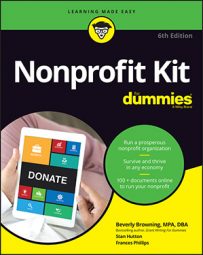-
Set clear, reasonable, yet ambitious fundraising goals based on a clear assessment of your organization's likeliest supporters.
-
Don't plan to depend on one grant, one event, one donor, or one approach. Balance your resources among multiple sources.
-
It costs money to raise money, and some approaches cost more than others. Make a fundraising budget.
-
Remember that individual donors represent the largest total source for private contributions.
-
Write a strong case statement for your organization, telling its story in terms of how it benefits the people (or trees or salamanders) it's designed to serve.
-
Ask. If you don't ask for a contribution, you won't get one.
-
Make it easy to respond to your request. That includes providing self-addressed envelopes and an easy-to-use "donate now" feature on your website.
-
Begin by asking for support among those closest to your nonprofit — its board, volunteers, constituents, and staff. Work outward from that core group, building a network of supporters through your first donors' personal connections and those benefitting from your nonprofit's work.
-
Include some fun in your fundraising. Special events can win friends and inspire new supporters.
-
The most important step in grantwriting is research. Examine each potential grant maker's interests, focus, limitations, and policies.
-
The key to a compelling grant proposal is demonstrating the needs of the constituents your nonprofit wants to serve and presenting a clear, detailed plan for addressing those needs. Acknowledge the work of others in your field and represent your organization's distinct mission and approach.
-
Organizations need capital — annual funds, buildings, endowments, cash reserves — to offer strong programs. Fundraising for capital campaigns and fund drives involves both large and small contributions. A standard campaign depends on one lead gift totaling at least 10 percent to 20 percent of the total money to be raised, and on 80 percent of the money being raised from 15 percent to 20 percent of the donors.
-
If "ask" is the number one rule of fundraising, "thank" is number two. Acknowledge your donors' support and work to deepen their involvement in your organization.

